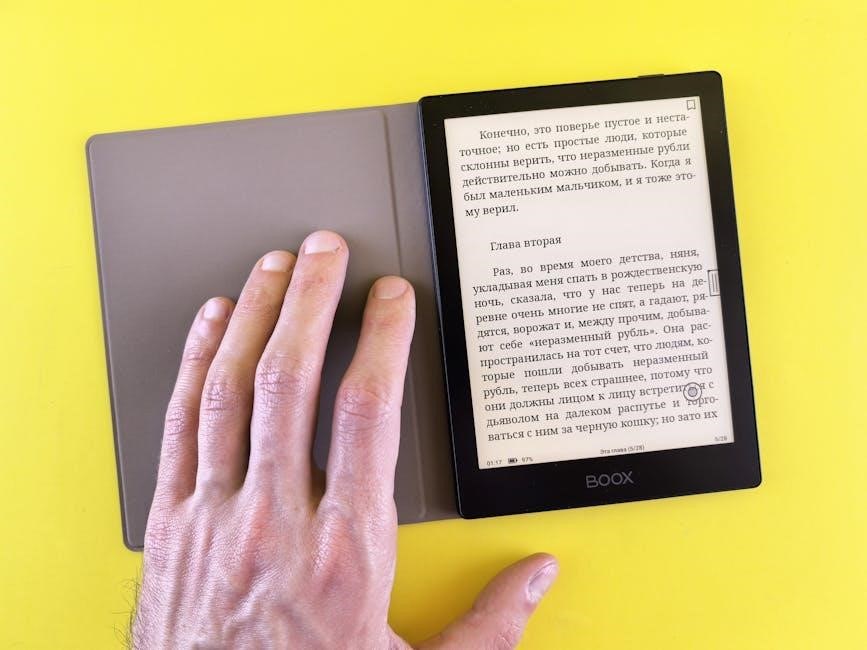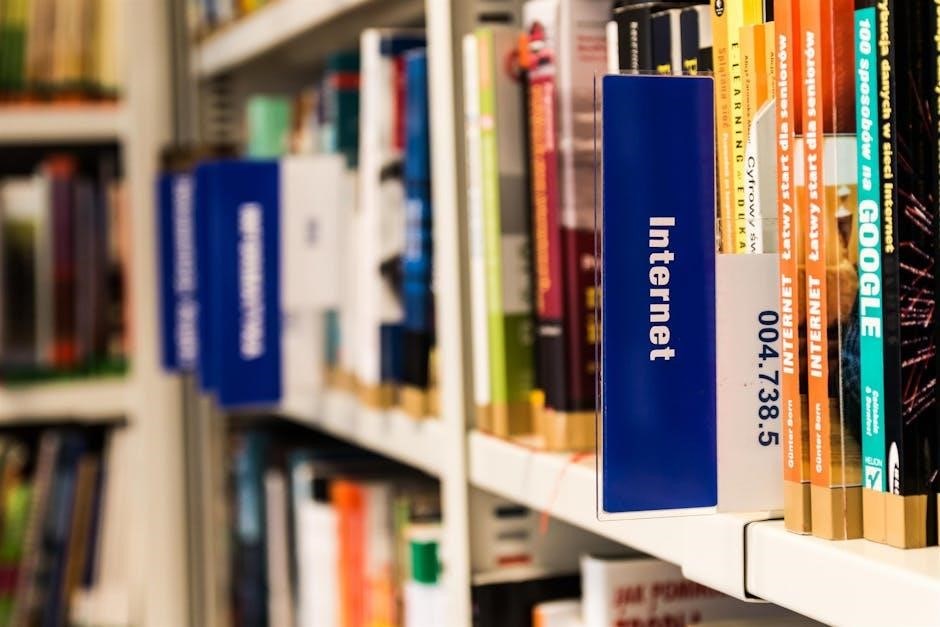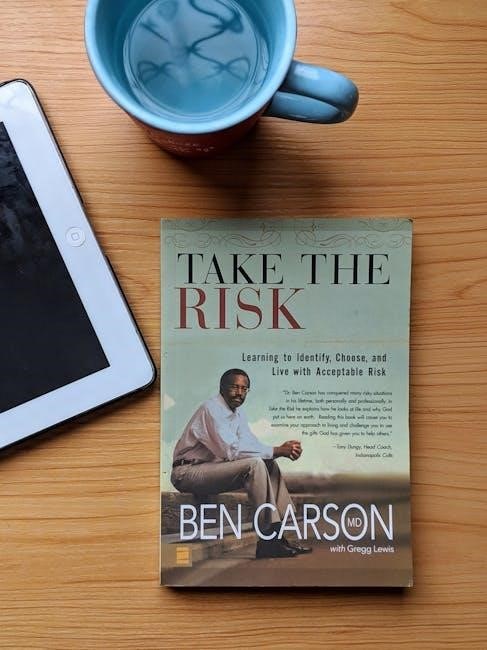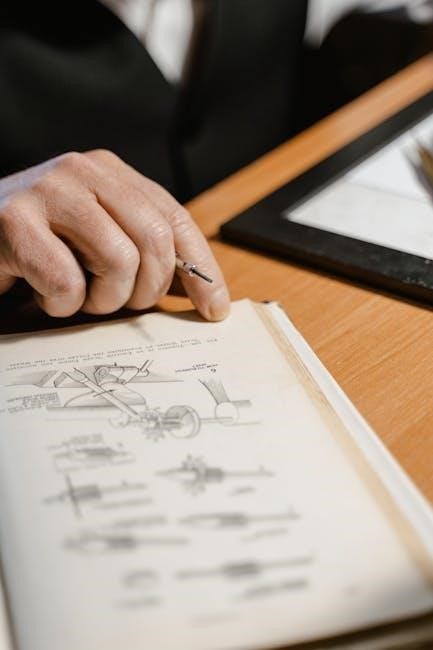Instructional technology and media for learning book provides teachers with strategies for integrating technology into classrooms using the ASSURE model and other effective methods and techniques always.
Overview of the Book
The instructional technology and media for learning book is a comprehensive guide for teachers, providing them with the knowledge and skills to effectively integrate technology into their classrooms. The book covers a wide range of topics, including the use of social media, copyright issues, and coding as literacy. It also explores the use of artificial intelligence and augmented reality in education. The book is designed to help teachers consider appropriate technology that aligns with content standards while meeting the learning needs of all students. With its focus on practical strategies and techniques, the book is an essential resource for teachers looking to enhance their instructional practices and improve student learning outcomes using technology and media in the classroom every day.
Key Concepts in Instructional Technology
Instructional technology concepts include technology literacy and digital citizenship always online.
Exploring Student Learning
Exploring student learning is a crucial aspect of instructional technology and media for learning, as it helps teachers understand how students learn and process information.
Using technology and media, teachers can create personalized learning experiences that cater to the diverse needs of their students.
The book provides strategies for exploring student learning, including the use of digital tools and multimedia resources to enhance student engagement and motivation.
By understanding how students learn, teachers can design instruction that is tailored to their needs, resulting in improved academic outcomes.
Effective exploration of student learning involves the use of technology to facilitate communication, collaboration, and critical thinking;
The book offers practical tips and techniques for exploring student learning, making it an essential resource for teachers seeking to improve their instructional practices and enhance student learning outcomes always online.

Designing Instruction and Assessing Learning
Teachers design instruction and assess learning using technology and media to enhance student outcomes and academic achievement always effectively online.
Designing Instruction
Designing instruction is a critical component of the instructional technology and media for learning book, focusing on creating effective lesson plans and assessments. The book provides guidance on designing instruction that aligns with content standards and meets the learning needs of all students. Teachers can use technology and media to enhance student learning and engagement, and the book offers realistic strategies for integrating these tools into the classroom. By designing instruction that incorporates technology and media, teachers can create a more interactive and immersive learning environment that supports student academic achievement. The book’s approach to designing instruction is grounded in research and best practices, making it a valuable resource for educators. Effective instruction design is essential for student success, and the book provides the necessary tools and strategies to support teachers in this effort always.

Integrating Technology and Media into Instruction
Integrating technology and media into instruction enhances student learning with digital tools and resources always effectively.
The ASSURE Model
The ASSURE model is a framework for integrating technology and media into instruction, it provides a structured approach to designing instructional materials and activities.
The model consists of six steps: analyze learners, state standards, utilize technology, require learners to use technology, ensure learning and evaluate use.
This model helps teachers to create effective instructional materials and activities that meet the needs of all learners.
The ASSURE model is widely used in educational settings and is considered a best practice for integrating technology and media into instruction.
It provides a systematic approach to designing instruction and helps teachers to ensure that their instructional materials and activities are aligned with learning objectives.
The model is flexible and can be adapted to meet the needs of different learners and instructional settings, making it a valuable tool for teachers.

Enhancing Learning with Technology
Enhancing learning with technology improves student outcomes and increases engagement always using digital devices and media effectively.
Engaging Learners with Digital Devices
Engaging learners with digital devices is a key aspect of instructional technology and media for learning, as it helps to increase student motivation and participation in the classroom.
Using digital devices such as tablets, laptops, and smartphones can provide students with a more interactive and immersive learning experience.
The instructional technology and media for learning book provides teachers with strategies for effectively integrating digital devices into their teaching practices.
This includes using digital tools to support collaborative learning, provide personalized feedback, and facilitate communication between students and teachers.
By leveraging digital devices in the classroom, teachers can create a more engaging and effective learning environment that supports the diverse needs of their students.
The book offers practical guidance on how to select and use digital devices to enhance student learning outcomes and achieve academic success.

Teaching at a Distance
Instructional technology and media for learning book supports teachers in creating online courses and distance learning programs effectively always using technology and media tools.
Connecting Learners Using Web 2.0
Instructional technology and media for learning book explores the use of Web 2.0 tools to connect learners and facilitate collaborative learning experiences.
The book discusses the potential of social media, online communities, and other digital platforms to enhance student engagement and interaction.
By leveraging these tools, teachers can create a more inclusive and supportive learning environment that fosters meaningful connections between students.
The book provides practical strategies for integrating Web 2.0 tools into the classroom, including tips for managing online discussions and promoting digital citizenship.
With the help of these tools, teachers can help students develop essential skills for success in the digital age, including communication, collaboration, and critical thinking.
The book offers a comprehensive guide to using Web 2.0 tools to connect learners and enhance teaching and learning practices in the classroom.
Instructional technology and media for learning book concludes with effective technology integration strategies always successfully implemented in classrooms today online.
Future of Instructional Technology and Media for Learning
The future of instructional technology and media for learning is rapidly evolving with advancements in artificial intelligence and augmented reality.
New technologies are being developed to support personalized learning and improve student outcomes.
The instructional technology and media for learning book will continue to play a crucial role in helping educators navigate these changes and effectively integrate technology into their teaching practices.
As technology continues to advance, it is likely that we will see even more innovative approaches to learning and teaching.
The book will provide educators with the knowledge and skills they need to stay up-to-date with the latest developments in instructional technology and media for learning.
By doing so, educators will be able to create learning environments that are engaging, effective, and supportive of all students.
This will ultimately lead to improved student learning outcomes and a more successful education system.